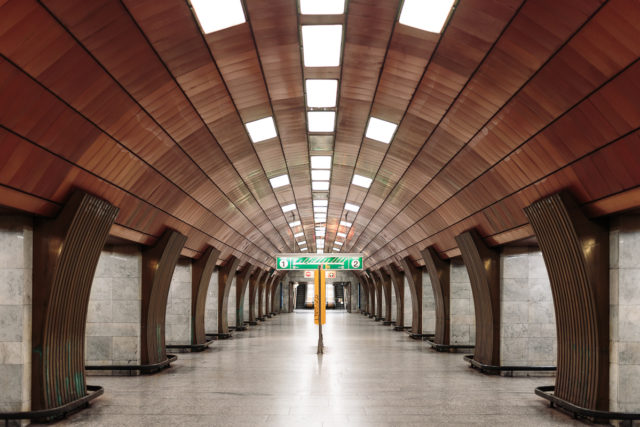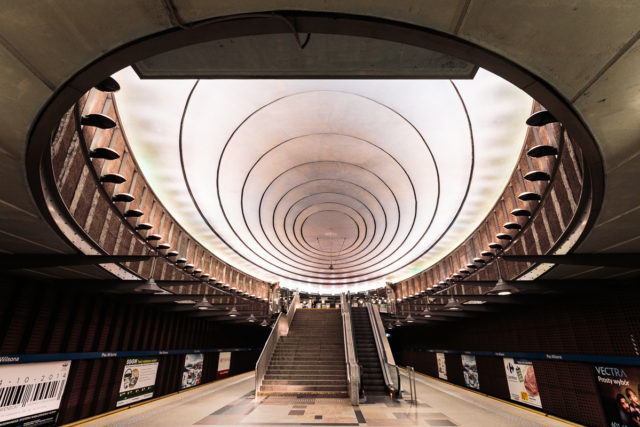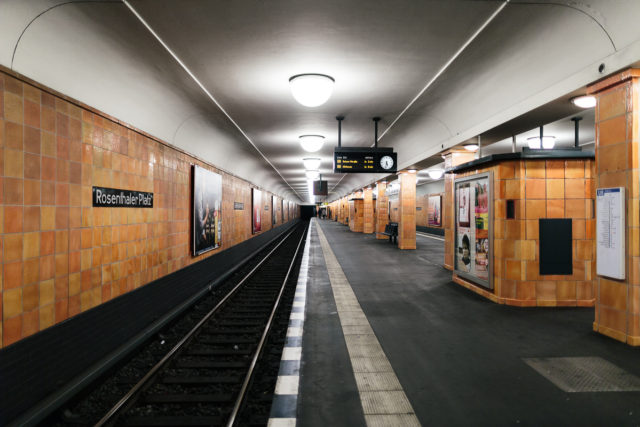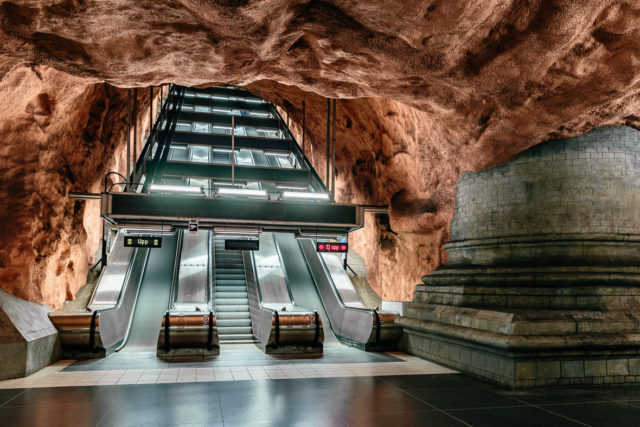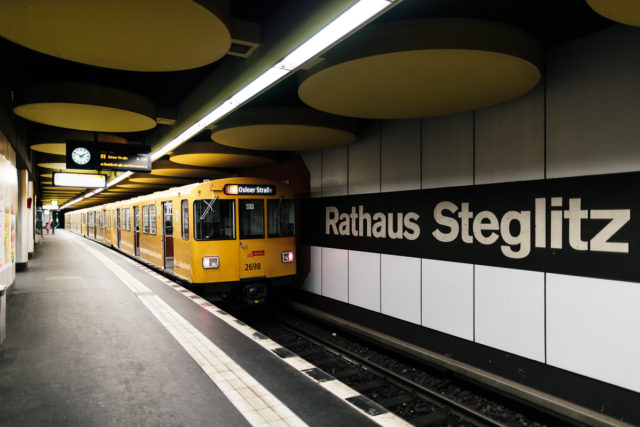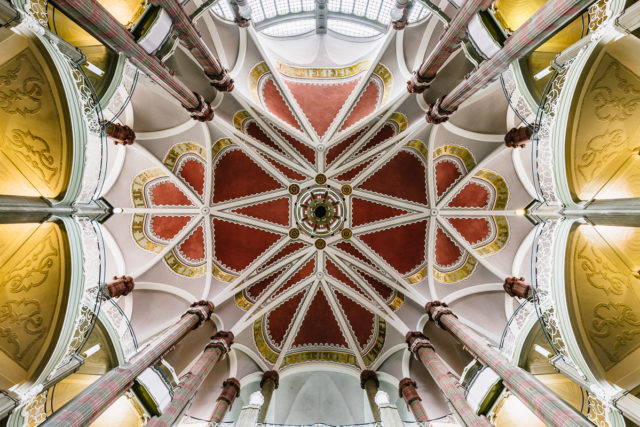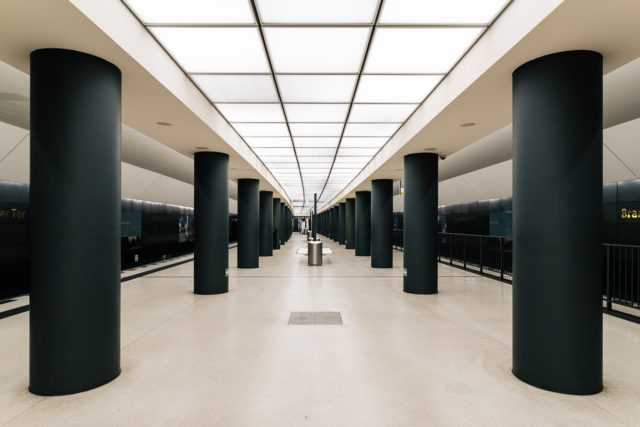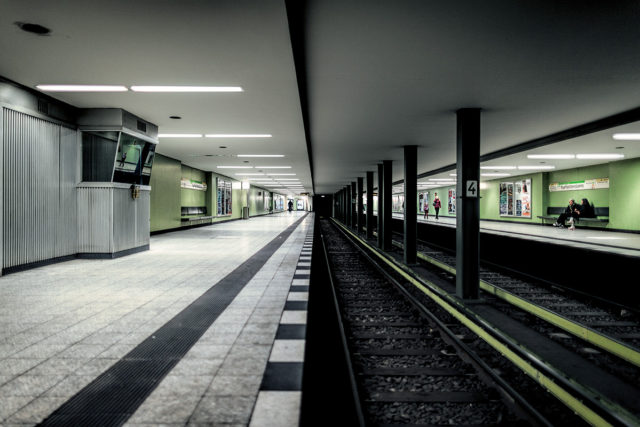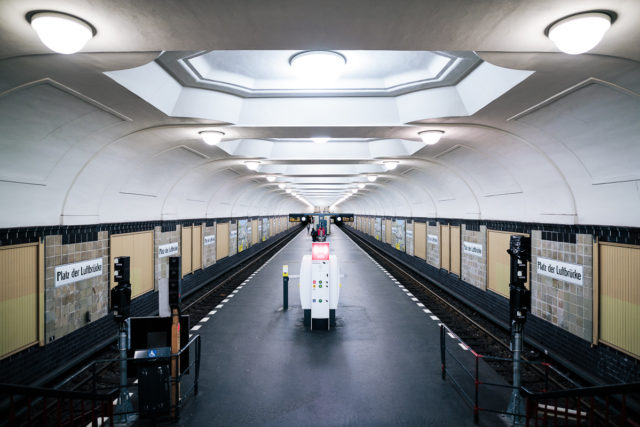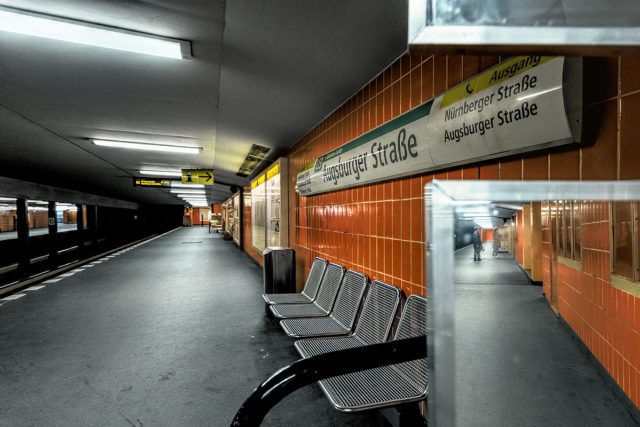Architecture photos with focus on underground train networks, modern as well as historic constructions and Berlin
If it’s rush hour in Prague and you miss a metro train by an inch only, then you merely have to wait 115-150 seconds until the next train pulls into the station. That’s top-notch in Europe, in particular in the background of only 1.2 million people living in Prague. The trains of Pražské Metro bomb along three lines through the underground of the Golden City, connecting old as well as brand-new stations that tell the modern history of the Czech capital…
Read More
Following the course of Vistula River, Poland’s one and only underground stops at 21 stations in Warsaw’s underground. Consisting of only one single line being in operation, about 370.000 people use the coaches shuttling along the 23.1 kilometres long track. Planning and design actually having started in the 1920’s finally saw and end when in 1995 Metro Warszawskie started operations.…
Read More
Besides being Berlin’s second North-South connection the U8 line is first and foremost a journey through history as well as social structures of the German capital. Beginning at the mystic Märkisches Viertel, having its own rules, the U8 route leads through nowadays central Berlin being annexed by trend victims, parasitic hipster Yankees and new arrived wanna-be Berliners around Rosenthaler Platz, to end at the original Kreuzberg and Neukölln districts, where life in summer happens in the streets, the Mediterranean way, where Berlin’s multi-cultural facet becomes more apparent again…
Read More
What do Ebba, Knut, Greta and Elvis have in common? Correct: all of them are true blue, come across the “wrong” side and run in Stockholm’s underground solely. But what sounds a bit like a scattered group of weirdoes is actually black-blue, made of metal and dedicated to transport people: the Tunnelbana, Stockholm’s metro, where every of its coaches has its own name.…
Read More
Running completely subterranean and on former West Berlin territory only the U9 line is 18 stops and 12.5km long. The line having orange as colour code connects Berlin’s Wedding district and the south-western Steglitz neighbourhood with the western city centre around the Zoological Garden station…
Read More
Despite being something very positive, when taking decisions independently from the sovereigns point of view, you, as a normal citizen, will rarely get in touch with courts. Of course Berlin has a court too, even several local courts, but it is the 1904 built Amtsgericht in Berlin’s Mitte district that peeps out of the grey mass and that deserves a look behind the scenes…
Read More
With a length of only 1,8km and merely 3 stops being served, the U55 is currently Berlin’s shortest underground but that will change as it is an isolated subsection of the U5 and will join forces with its mother in 2019 after the construction works at Unter den Linden as well as Alexanderplatz get finished.…
Read More
The German capital can look back on a worldwide unique history and of course the city’s constructional countenance gives a very good reflection of that. Against the background of other European capitals Berlin seems to skip a couple of urban development stages. Despite constructional blunders and demolition one of the best history tellers is still around, that is the city’s infrastructure, in particular the underground transportation, its diverse tunnels and various stations.…
Read More
The photographic ride along the course of Berlin’s underground continues, this time with the U6 which runs from the North to the South, connecting bourgeois Alt-Mariendorf with the aviation noise characterised Alt-Tegel neighbourhood. Along its course the U6 serves not only 29 stations, it also stops at important transportation hubs like Wedding and Tempelhof, both part of the circular S-Bahn line, or Friedrichstraße, one of Berlin’s major transfer stations…
Read More
Berlin’s underground line 3 runs through the city’s southwest, between Nollendorfplatz station and its terminus Krumme Lanke. It connects the campuses of the Berlin university ‘Freie Universität’ with the western city centre. Its present course is 12.1 kilometres long and exists since 2004. In particular the stations being located on Wilmersdorf territory were given quite an aesthetic appearance to remain as icon for the former wealth of this neighbourhood…
Read More
